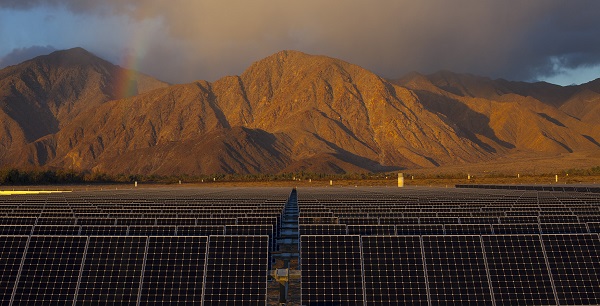A lot of news outlets have been carrying on about solar making up 100 percent of the power generation added to the U.S. grid in March, as though it were some kind of watershed event, a sign of great progress, full of meaning. “Solar power shines in March,” said the newspaper in Philadelphia. “New Federal Report Shows Solar Achieved History in March,” said PowerEngineering.com.
Just for the record, we’d like to point out that this hyped March data [PDF] from the Federal Energy Regulatory Commission actually means very little.

Yes, yes, no doubt – solar power is becoming an interesting and important player in U.S. power production. But that FERC report (1) didn’t speak to solar’s true disruptive potential nor (2) was the amount of added solar capacity remotely impressive.
Point 1: Solar’s real game-changing ability is as a distributed power source, on the rooftops of home and businesses, as Chris Clarke wrote about on ReWire last week. Those monthly FERC status reports don’t address distributed solar. FERC was talking about apples; in this case, it’s oranges that are exciting.
It’s distributed solar – also known as “behind the meter” or “end user” solar – that has the utilities fearing for their livelihoods, because when you and I and businesses power our own homes and buildings, and when we send power to the grid that the utilities have to pay retail rates for, it means less money for them to cover their fixed costs (and pay returns to stockholders). Or so they think. Highly disruptive.
It’s also distributed solar that is an economic engine, driving much of the job growth that the industry rightly brags about. And it’s distributed solar that almost always avoids the sometimes overstated but also occasionally very real environmental issues that are raised by utility-scale solar developments in fragile desert habitats in the Southwest, or in forests or farms in the Northeast (where utility-scale solar sometimes masquerades as distributed solar).
Point 2: Forty-four megawatts is actually a subpar month for new utility-scale solar power capacity. In January and February combined, 496 MW came online. Against that, March sucked. And last year, 1,752 MW of utility-scale solar went in, an average of 146 MW per month.
The only reason 44 MW wasn’t considered a dismal month was because it happened to come when no new natural gas, or goal, or geothermal or anything else was added. That was mostly a quirk of the calendar, and partly a result of the fact that with electricity demand largely flat, not a whole lot of new capacity in general is going in.
Here’s another way to look at it: Total U.S. generating capacity, according to that same FERC report, is 1,161.37 gigawatts – or 1,161,370 megawatts. That means that the new solar in March that FERC told us about amounted to a .004 percent addition to total grid capacity (and that’s rounding up). Adding 44 MW per month, it would take 44 years for utility-scale solar to displace 20 percent of our current electrical generating capacity.
That’s not fast enough and it’s nothing to celebrate, which is why there was no reason at all to get excited about the March FERC report.